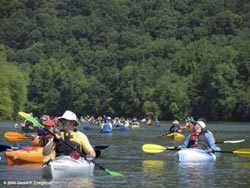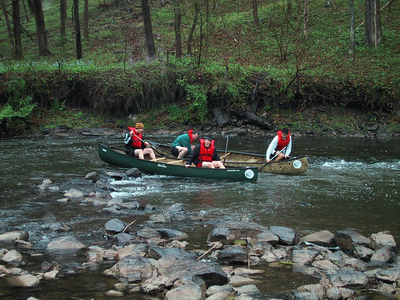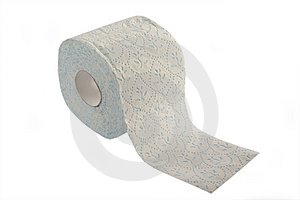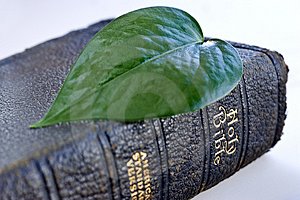
I had originally planned to write this entry at Christmas time, but time, as it tends to do during that time of year, got away from me.
But as I watched a group of pastors from different denominations gather at the green between Emmanuel Lutheran Church and Zions United Church of Christ Friday, it occurred to me that the prayer processional through Pottstown is, among other things, a rite of spring.
It is a rite that brings people of all different beliefs, however slight, together in the common cause of helping their community. Then I started thinking about how that common cause might be enlarged to include the planet we all share.
And suddenly it seemed that Easter, what is arguably a more significant holiday on the Christian calendar than Christmas, and which coincides so directly with the idea of new life that spring epitomizes, is an even better time to ask the question.
The question, as it was so succinctly put by this Chicago Tribune headline, is this: "Is God a Tree-Hugger?"
First, let's get some confessions out of the way. I don't go to church and I've never read The Bible.
Many of you might argue this makes me a poor choice, or even ineligible, to address this question. You might be right. Feel free to say so on your blog.
I have often been puzzled by the resistance some more fundamental Christians have toward environmental issues. To me, it seems counter-intuitive. After all, according to their beliefs, and those who advocate the unprovable theory of "Intelligent Design," God created the Earth.
As a full-blown supporter of scientific inquiry, you might be surprised to know that I am willing to concede this point, although not the way it is portrayed in the Bible, which again, I have never read. Literal interpretation of the Good Book suggests the planet is a few thousand years old, a stubborn insistence that flies in the face of incontrovertible physical evidence.
(God gave us brains too folks. Come on.)
But that same scientific evidence also suggests the universe was created by the Big Bang. Given that no scientist can offer a provable explanation for that event, it seems to me that the hand of the Big Guy is as good an explanation as any for the thing that started it all, and so I say thanks for life and all that.
But back to what puzzles me. If God created the Earth, the animals, the ecosystems, the perfectly coordinated interaction that makes life work here in any number of forms, would he really want us to be trashing it?
There is an argument that because God intends to destroy the Earth any day now, it doesn't matter what we do to it, but that seems more like a rationalization that a belief to me. What if the Rapture doesn't come for 50 or 100 years, what does that say about our love for our children or our grandchildren? Do we want to take the chance on leaving them a ravaged planet, barren of the resources needed to sustain life, a ruined paradise, just because we mis-read the schedule for Armageddon's arrival? Are we really that selfish? Is that terribly Christian of us?
Anyway, who is going to argue with a straight face that God is pro-pollution? Does God want us to fish and pollute the seas into dead zones? Does God want majestic old growth forests cut down so we can have softer toilet paper?
I may not have read the Bible folks, but I feel pretty secure in saying it doesn't tell us to "go forth and trash the place."
If indeed this planet is the product of "Intelligent Design," is it a good thing to be messing with the design by introducing a whole host of chemicals to the environment that were never part of the original model? Chemicals which are now found in our bodies during routine blood samples?
My favorite comment on this subject comes from a fellow named. J. Matthew Sleeth. Once an affluent doctor, he became "haunted" by the deaths of children; deaths he saw being caused by environmental factors. He gave up his practice, moved to Kentucky and became a Christian lecturer on being kinder to the Earth.
If you wonder what kind of things Sleeth talks about, consider this quote: "In the Bible, the first page has a tree -- the tree of life," he said. "The last page has a tree on it -- the tree of life. … The Earth is the Lord's. That's what the 24th Psalm says. And we've treated it like it's ours."
"Sleeth notes that when he speaks at churches, some ask, 'Won't people start worshipping trees?'"
He said he finds it ironic that the question is asked by those "who belong to the only religion on the planet that brings a tree into their house once a year, sings songs to it, decorates it, and puts little statues of their God underneath it."
I know all this as a result of this article in the Louisville Courier-Sentinel which featured Sleeth because he wrote the introduction to the Green Bible, a new version of an old book that is printed on recycled paper, using soy-based inks and which highlights passages having to do with the Earth in green.
(For those who live and die by spreadsheets, the Tribune has calculated that the Bible -- have I mentioned that I've never read it? -- "contains 1,000 references to the planet but only 490 references to heaven and 530 references to love.")
Called "Creation Care," the melding of Christianity and environmentalism is a growing movement. Last October, the student-initiated Renewal network gathered at Eastern University in Pennsylvania to plan their activities.
As reported by this article in the Christian Science Monitor, they had a new tool to work with. The "Green" Bible mentioned above.
"Along with the biblical text, the book includes a set of essays by theologians and conservationists (including Archbishop Desmond Tutu, Brian McLaren, and Pope John Paul II). There’s a concordance on environmental subjects and a study guide on “green” biblical themes for use by individuals and church or campus groups," The Monitor reports.
"'Many younger people very much feel it is part of the Christian message to take care of the world,' says Michael Maudlin, coproject editor for HarperOne. 'So we wanted to give them a primer to help people understand that Earth care is part of the mandate God gives us.'"
"'It helps rectify a misperception that this is not a biblical issue,' says Peter Illyn, an evangelical pastor who founded an environmental stewardship group called Restoring Eden to foster awareness across the denominational spectrum. (The Green Bible comes in the New Revised Standard Version, which is accepted by Protestants, Roman Catholics, and the Orthodox.)"
All of which sounds to me like the kind of spring/Easter renewal Christians and environmentalists alike can get behind; maybe enough of one that I will finally get around to reading that book. I understand it has quite a following.
Labels: Green Bible, Intelligent Design, J. Matthew Sleeth
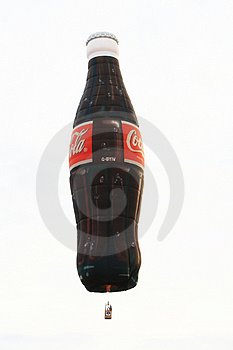
 RSS
RSS
